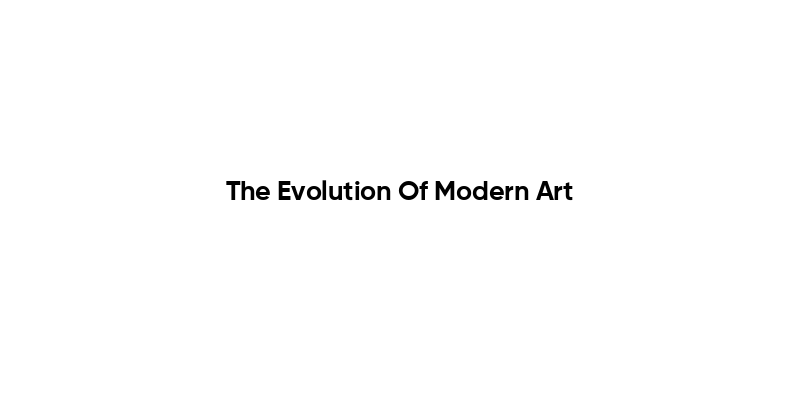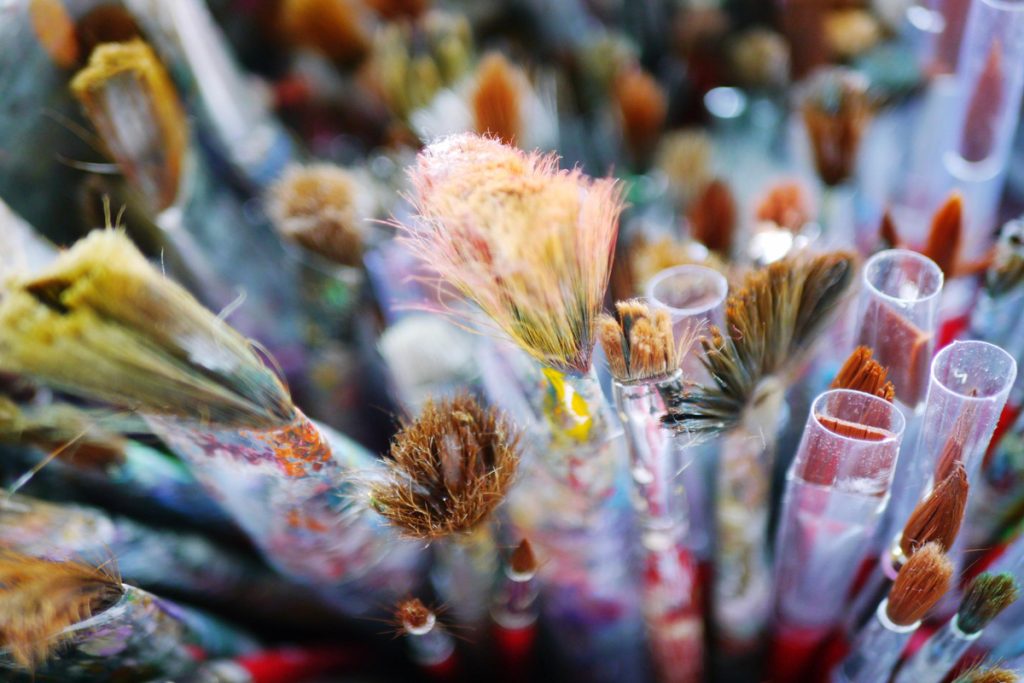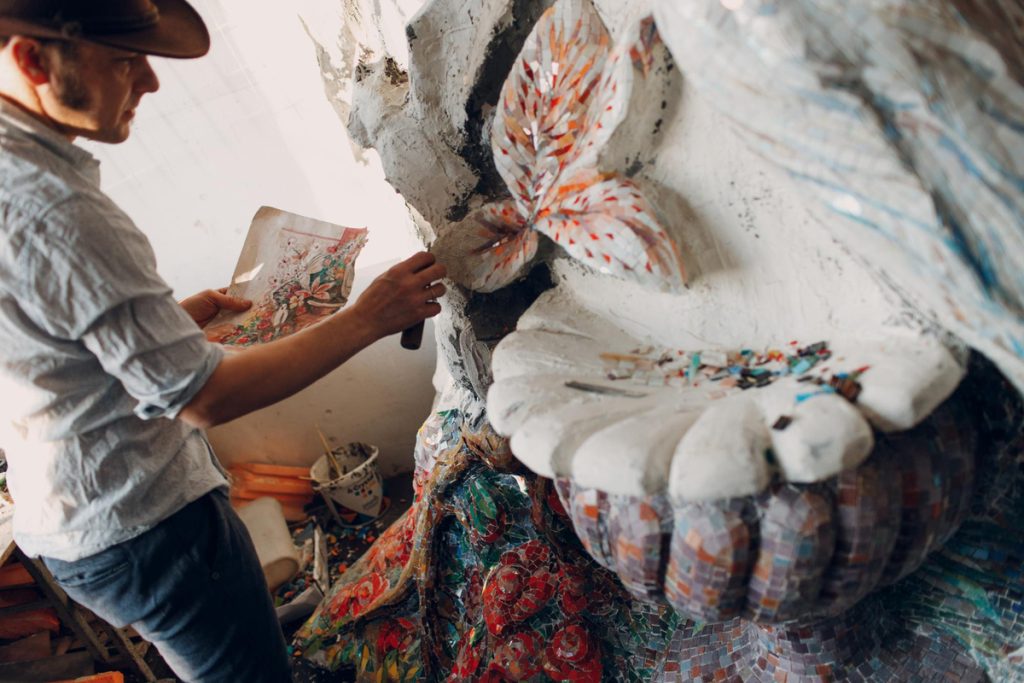The Birth of Modernism
The Evolution Of Modern Art began in the late 19th century, marking a significant departure from traditional artistic conventions. This period saw the emergence of movements such as Impressionism, which challenged the established norms of representation and perspective. Artists like Claude Monet and Edgar Degas focused on capturing the fleeting effects of light and color, emphasizing the subjective experience of the viewer. This shift laid the groundwork for future explorations in modern art.
As modernism took root, it became a platform for artists to express their individual perspectives and emotions. The rejection of realism and the embrace of abstraction allowed for a diverse range of styles and techniques. This evolution was not just a change in aesthetics but also a reflection of the rapidly changing society of the time, influenced by industrialization and urbanization.
The Role of Technology in Art
With the advent of new technologies, The Evolution Of Modern Art experienced a transformative phase. The introduction of photography in the 19th century challenged painters to rethink their role. Instead of merely replicating reality, artists began to explore new ways of seeing and interpreting the world. This led to the development of movements such as Cubism, pioneered by Pablo Picasso and Georges Braque, which fragmented objects into geometric shapes and reassembled them in innovative ways.
Moreover, the rise of digital technology in the late 20th century further revolutionized the art world. Digital art forms, including video art and computer-generated imagery, expanded the boundaries of creativity. Artists began to experiment with new mediums, leading to a fusion of traditional and contemporary practices that continue to shape the landscape of modern art today.
The Influence of Social and Political Movements
The Evolution Of Modern Art has been deeply intertwined with social and political movements throughout history. The early 20th century saw the rise of movements such as Dada and Surrealism, which emerged as responses to the chaos of World War I. Artists like Marcel Duchamp and Salvador Dalí used their work to challenge societal norms and provoke thought, often incorporating elements of absurdity and dream-like imagery.
In more recent years, contemporary artists have continued to engage with pressing social issues, using their art as a form of activism. Movements such as Feminism and Civil Rights have inspired artists to address themes of identity, race, and gender in their work. This ongoing dialogue between art and society highlights the power of modern art as a tool for reflection and change.
The Globalization of Art
The Evolution Of Modern Art has also been significantly influenced by globalization. As artists from diverse cultural backgrounds began to gain recognition on the international stage, the art world became a melting pot of ideas and styles. This cross-pollination of influences has led to the emergence of new movements that reflect a more global perspective.
Art fairs, biennials, and online platforms have facilitated the exchange of ideas and practices across borders. Artists like Ai Weiwei and Yayoi Kusama have brought their unique cultural narratives to a global audience, challenging viewers to consider the complexities of identity and belonging in a rapidly changing world. This globalization has enriched the modern art landscape, making it more inclusive and representative of diverse voices.
The Future of Modern Art
As we look to the future, The Evolution Of Modern Art continues to evolve in response to technological advancements and societal changes. The rise of virtual reality and augmented reality is opening new avenues for artistic expression, allowing artists to create immersive experiences that engage audiences in unprecedented ways. This shift is not only redefining how art is created but also how it is experienced and consumed.
Furthermore, the increasing emphasis on sustainability and environmental consciousness is prompting artists to explore themes related to nature and climate change. As modern art moves forward, it will undoubtedly continue to reflect the complexities of contemporary life, challenging us to think critically about our world and our place within it.
This table summarizes the key movements and characteristics of modern art, highlighting its evolution from the late 19th century to the present day.
| Period/Movement | Timeframe | Key Characteristics | Notable Artists |
|---|---|---|---|
| Impressionism | 1860s – 1890s | Focus on light and color, capturing moments in time, and everyday subjects. | Claude Monet, Edgar Degas, Pierre-Auguste Renoir |
| Post-Impressionism | 1886 – 1905 | Emphasis on personal expression, abstract forms, and symbolic content. | Vincent van Gogh, Paul Cézanne, Georges Seurat |
| Cubism | 1907 – 1917 | Fragmentation of objects into geometric shapes, multiple perspectives. | Pablo Picasso, Georges Braque |
| Futurism | 1909 – 1944 | Celebration of modern technology, speed, and dynamic movement. | Umberto Boccioni, Giacomo Balla |
| Dadaism | 1916 – 1924 | Anti-art movement, embracing chaos and irrationality, often using found objects. | Marcel Duchamp, Tristan Tzara |
| Surrealism | 1920s – 1950s | Exploration of the unconscious mind, dream imagery, and bizarre juxtapositions. | Salvador Dalí, René Magritte, Max Ernst |
| Abstract Expressionism | 1940s – 1950s | Emphasis on spontaneous, automatic, or subconscious creation; large-scale works. | Jackson Pollock, Mark Rothko, Willem de Kooning |
| Pop Art | 1950s – 1970s | Incorporation of popular culture, mass media, and consumerism into art. | Andy Warhol, Roy Lichtenstein, Claes Oldenburg |
| Contemporary Art | 1970s – Present | Diverse practices and mediums, often addressing social, political, and cultural issues. | Damien Hirst, Ai Weiwei, Yayoi Kusama |
This HTML document provides a structured overview of the evolution of modern art, detailing key movements, their timeframes, characteristics, and notable artists associated with each period.



